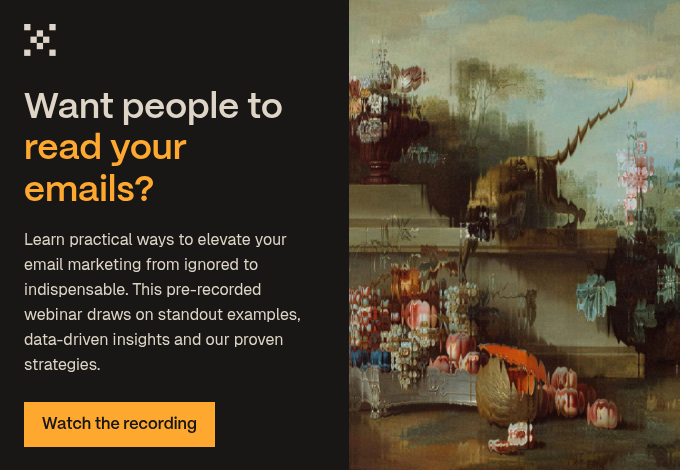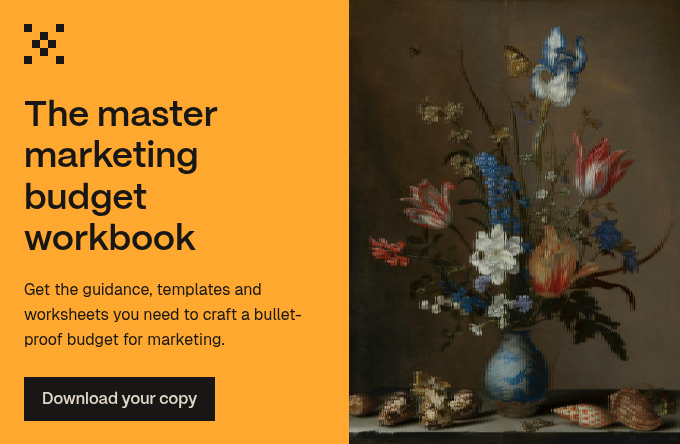Looking for all the ingredients for marketing success?
Well, you've landed on the right recipe blog.
We'll run through everything you need to make your next marketing plan. From SEO to organisational tools, we give you the knowledge you need to make the most of your marketing.
Sound tempting? Let's dig into some more tasty details.
Watch the video:
This blog was originally a webinar, which you can view here:
Essential ingredients for any marketing plan by Matthew Stibbe, CEO of Articulate Marketing from Matthew Stibbe on Vimeo.
You don't need to write war and peace for an effective marketing plan
This is our first big point. Articulate's marketing plan probably exists on about three or four pages of our intranet. Now, don't get us wrong, behind all of that, there's quite a lot more thought and work and further documentation involved.
Let us elaborate.
So often we see that people have written really long marketing plans, but they've paid more attention to the design of the bike shed and not any attention to the design of the nuclear reactor next to it. And they've covered up that gap by writing too much.

We share this diagram with you partly because we like it but also because it's all about how we think about every piece of marketing fitting together; the activities of marketing and how they lead to outcomes.
If you stick this diagram at the top of your marketing plan, it'll look like you've thought about your tech stack and your relationships, and then you can dive into the more important stuff.
So now we're going to cover five points that we think are the essential ingredients of a marketing plan:
- Targeting
- Positioning
- Messaging
- Journey mapping
- Target setting
Let's start with targeting.
Targeting
Remember, all marketing is targeting.
David Baker's book, The Business of Expertise, is a strongly recommended read for everybody. He talks about expert consultancy businesses; like marketing agencies.
In it, Baker says, if you are correctly positioned, you probably have 10 to 200 competitors and 2,000 to 10,000 potential customers for whom you are uniquely valuable, and not commoditised or easily replaced.
We talk a lot to potential clients at Articulate who are somewhat interchangeable. They try to get around this by targeting lots and lots of potential customers like, "Well, yes, we could work for anyone in the world who has this, whether they are 10 people or 10,000 people."
That's not actually a great positioning strategy. Thinking really hard about your positioning is the heart of marketing.
Now let's talk about the ideal client profile. For B2B marketing, which is our patch, we're very interested in defining the type of companies that might need our services, might need our client's services. We call that the ideal client profile. Here's a little insight into our own positioning as a marketing company:
| ICP Name | Description | Headcount | Contact |
| MSPs | IT specialists that provide remote support and technology consulting | 20-100 | CEO |
| Mid-market tech | Large B2B tech company. Usually software based. | 50-100 | Marketing Director |
| Tiny dreamers | Small tech/software company | 1-20 | Founder/CEO |
| Enterprise | Large, established tech companies | 200+ | Content Director, Marketing Director, Marketing Manager |
Your buyer personas

Within your ideal client profiles, there are buyer personas. This is where you start thinking about the person who is going to write the check or make the decision. Sometimes, it can be multiple people.
Getting your personas right is an exercise in imagination and thinking about:
- Their needs
- Their problems
- What they look for
- What they want
We find that interviewing existing customers and looking them up on LinkedIn is a pretty good way of researching that. When we talk to prospective clients through this strategy work, they often see their clients through the lens of their own services and their own engagement with them, so you need to do more research outside of that conversation.
Positioning
Let's move on to positioning. How do you position yourself?
You start by watching this video by Sonia Marciano. It's 40 minutes that will enrich your life if you're interested in marketing, positioning, strategy and increasing the value of your business.
If you're reading this blog, you need to watch this video. Go watch this. It's really, really valuable.
In the video, Sonia talks about how Subaru positions itself as distinct from Ford who wants to make a car for everybody. Subaru just wants to make a particular type of car with a particular type of platform for a particular set of people, and they have a particular story around safety that they sell. And that is a really, really good role model of positioning.
So be more Subaru.
Now, how do you define your positioning?
- What is the frame of reference?
- What job does it do for you?
- why is it important?
- What are the emotional and rational proof points and differentiators
- What are the reasons to believe?
If you can write this, interrogate it and test it, this will help clarify your positioning mightily.
We did a webinar months ago about the difference between real positioning and me-too blah-blah. If you're interested in this, go watch that video because we get even meaner about poor old MSPs there.
Write a list of 5-10 reasons why your customers choose you
Give this exercise a go. This came out of the David Baker book.
Write down a list of your differentiators; reasons why companies and clients should choose you over your competitors. And then really investigate that and test that for things that are actually true of you or not true of the majority of all of your competitors.
It's pretty hard. Try for a "shitty first draft" written in 10 minutes. Here's our attempt:

Messaging
We've talked about what you sell, who you sell it to and who you are talking to. Now, we're talking about what you say to those people.
Repeat yourself. That's something we do a lot. Even if it's something that's incredibly familiar and clear to you, you have to repeat it in different ways, in different mediums to get the message across to other people. Get your core messages through at every opportunity.
And, build your company purpose, vision and values into everything you do. Here's our purpose:

Journey mapping
Let's move on to journey mapping.
Marketing has a beginning, a middle, and an end. A lot of prospective clients come to us with a traditional sales marketing model.
They're used to people coming to them, finding their website, calling them up, and being ready to buy at the bottom of the funnel. With marketing and, indeed, with some of the sales activity that we support with sales enablement, you have to engage people earlier in their decision-making process and earlier in their buyer's journey. They might have not fully articulated the problem they need solving yet - but, they know there's work needing doing.
You can educate them and you can position yourself through that buyer's journey.
Most clients - not all, some are very savvy - but a lot of people focus very strongly on this bottom of this funnel decision purchase phase. And so, they think they need to talk about products and prices and technical things.
If you have a prospect that is interested in you and understands your positioning, that is a much stronger place in which to defend margins, for charging more and for taking an expert stance.
This is the value that marketing can bring. It's just getting people earlier in that journey.
Target setting
Beware of the Underpants Gnomes. This is an episode of South Park where these guys, the Underpants Gnomes, think that they can make huge profits.
They want the money, and they think that the strategy is collecting underpants. But the bit they're missing is the thing that connects the underpants to the profit. What do they do once they've collected the underpants?
This is the problem:
Very often, people think of marketing as a kind of tax, especially if they're used to their business succeeding through their network referrals. And they go, "I'll do three months of marketing, or I'll spend a thousand pounds on PPC and random acts of marketing," and dip their toe in the water.
Big companies typically spend 8 percent to 12 percent of their revenues on marketing. For comparison, Microsoft spent around $19.5 billion on marketing last year.
If you want marketing-driven growth, you need to start thinking about spending money on marketing and dedicating resources.
Funnel modelling
Don't know what to think about when you're looking at the budget?
- Think about what a new client is worth
- What is their lifetime value?
- What is a typical deal size?
- Think about the cost of customer acquisition
If you start thinking about the budget in your marketing plan, that's a few numbers.
- We're going to spend this much
- This is our target
- This is our target cost of acquisition
- This is our target budget spending and here's how we're going to allocate it
That's probably a paragraph. If you're writing more than a page on your budget and you're not a big company, that's too much.
It doesn't have to be big or complex. Look at this particular example:

And then you can start asking yourself:
- What would be a reasonable growth rate?
- Can we get more traffic to the site?
- Can we spend a bit more money on advertising to get better at converting visitors?
This means you can start building plans for growth for widening the funnel and, in this case also, for putting in some prospecting and some sales-driven marketing.
Don't obsess over too much data
This is the dashboard that we look at pretty much every day for Articulate. We look at the traffic, we look at the inbound contact flow and the conversion rate on the site.

You just need to know the high-level data. Sometimes, people confuse that and they think that they need to know every single thing every single month.
Don't obsess about too much data. There's loads of information you don't need to have. Check out our Marketing Metrics webinar for more on that.
If you would like Articulate's help to build a marketing strategy for your business, get in touch. We'd love to talk to you. If you have any questions about anything in this presentation, book a meeting.






